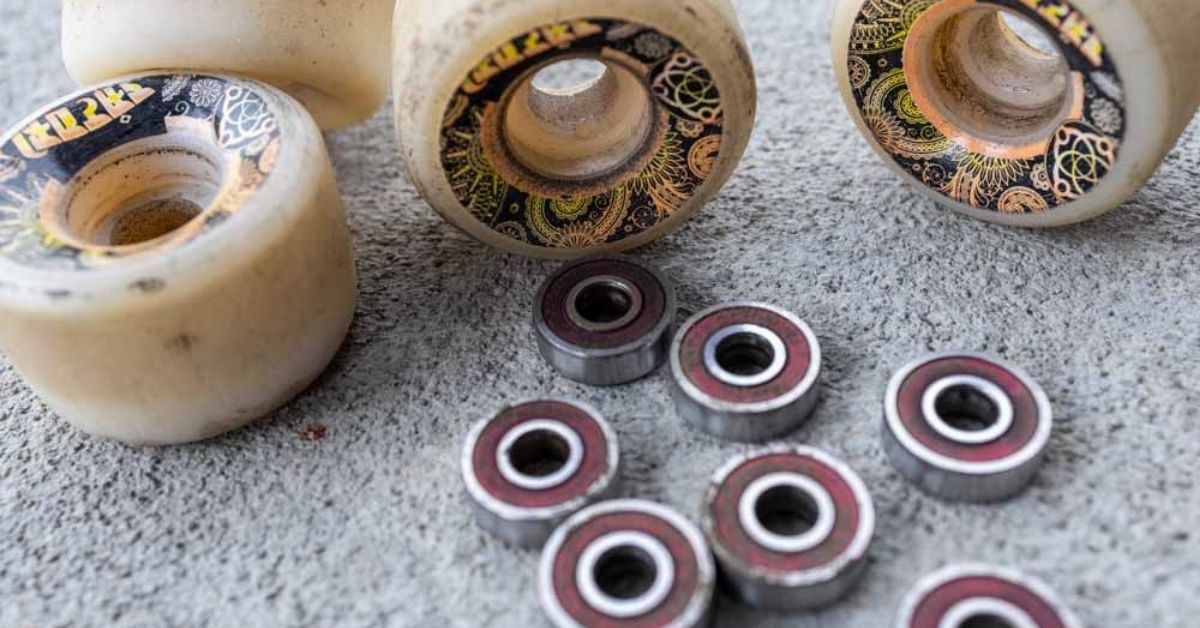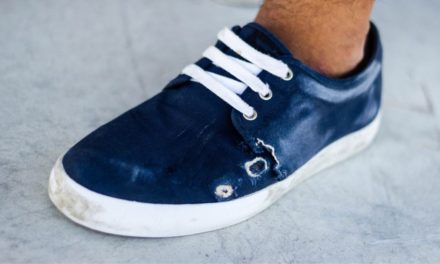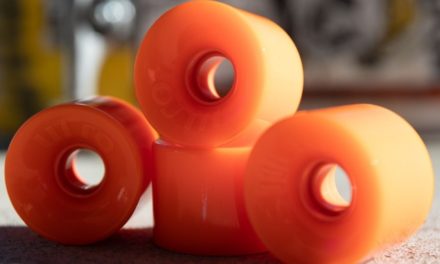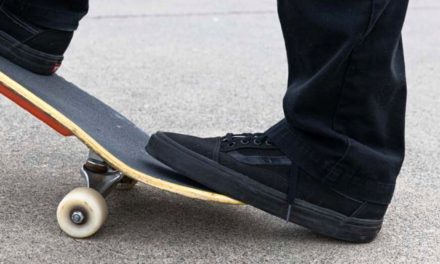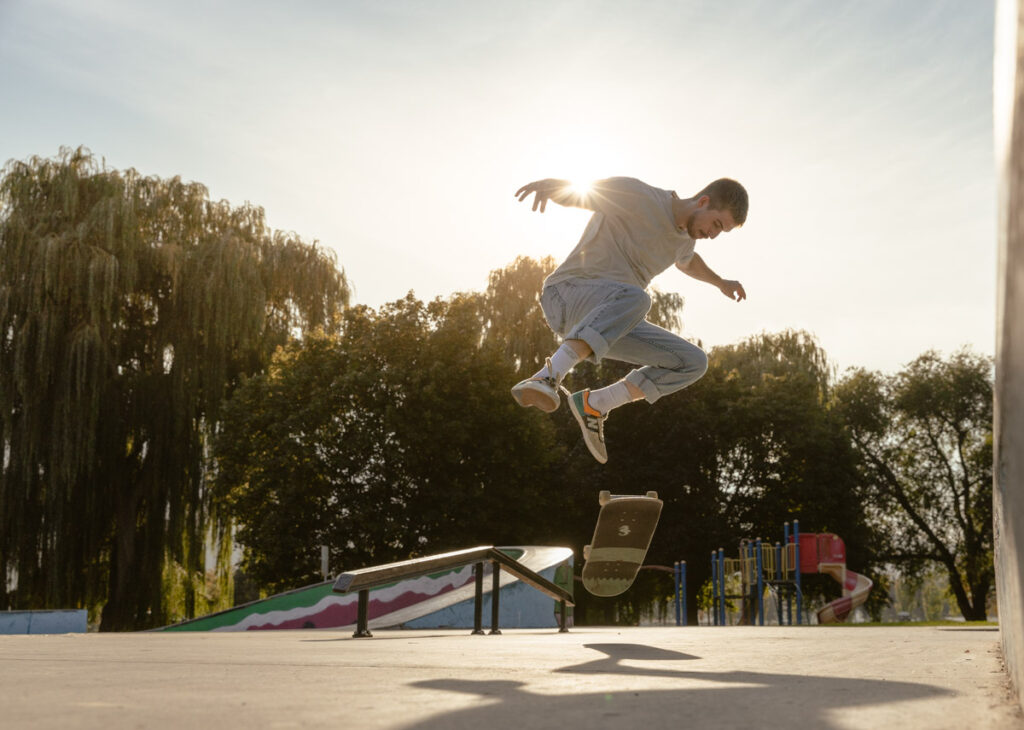If you’ve been skating the same set of wheels and bearings for a while, the big question is when is it time to replace them. Although skateboard wheels and bearings tend to have different lifespans, it ultimately comes down to how often you skate and the conditions you skate in.
Over the years, I’ve skated more wheels than I can count, and some I probably left on my board longer than I should have. Luckily there are a few tell-tale signs that it’s time for a new set of wheels.
As for bearings, they tend to last quite a long time with the proper care and maintenance. I’ll get into the specifics later in this article, but first, let’s talk about the expected lifespan of your skateboard’s wheels.
How Long Do Skateboard Wheels Last?
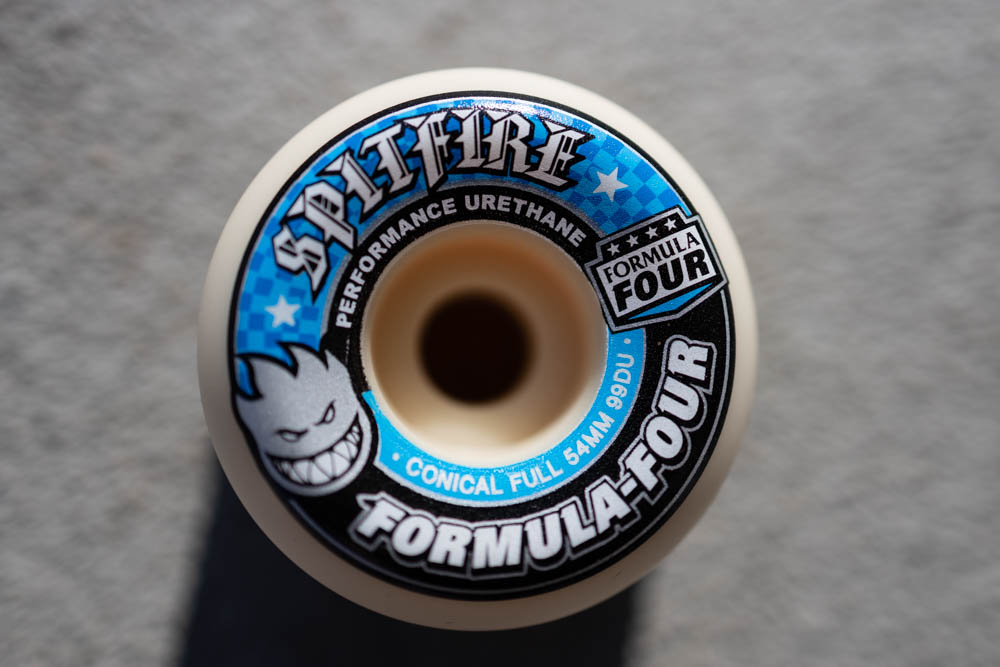
Skateboard wheels can last 8 – 16 months before needing replacement if you are skating regularly. However, larger diameter wheels will last longer than smaller diameters. You’ll know it’s time to replace your wheels if they start to cone, have flat spots, or don’t roll as quickly anymore.
This timeline depends on the skating you’re doing and the frequency you’re skating. For example, if you constantly do powerslides, you will wear through your wheels faster than someone who just cruises around. If you imagine the cement like sandpaper for your wheels, it’s easy to see why powerslides inevitably wear them down.
From my experience, harder durometer wheels wear out faster than softer durometers because they are easier to slide on the ground. A softer durometer is tackier, is harder to slide and pivot with, and therefore wears down slower. To give you a specific range, wheels 95a and above will wear out quicker than a wheel that’s 90a or softer.
Just remember that different wheel durometers give you a different experience while skating!
How To Know If Your Skateboard Wheels Are Worn Out
There are a few easy ways to tell if your skateboard wheels need to be replaced. These factors are coning, extreme flat spots, and wheels that are worn far below their initial diameters.
1. Coning

Coning is when one side of your wheel wears down faster than the other. This is usually the outer edge of your wheel wearing out faster than the inner edge, creating a tapered wheel surface. At first, this is usually unnoticeable, but if left too long, it dramatically impacts the performance of your wheels. Since half of your wheel has a larger surface area contacting the ground compared to the worn-out side, you lose out on grip.
A Trick To Prevent Coned Skateboard Wheels
Since the outer edge of your wheels tends to wear faster than the inner edge, you can rotate your wheels every few months to balance the wearing. For example, I like to move my front wheels to the back and flip the outer edge of the wheel to the inside. That way, the larger side of your wheel will start to wear down and eventually match up with the more worn side once again.
If you do this wheel flipping every 3 – 6 months (depending on how often you skate), you’ll avoid the coning issue altogether.
2. Major Flat Spots
Now the second way to tell if your skateboard wheels are worn out is that they have extreme flat spots. I say extreme because small flat spots can happen any time but will eventually work themselves out. However, if you look at your wheel and there’s a large, noticeable flat section of the wheel, it may be time to replace it.
That’s because the flat spot will only disappear once the remaining wheel wears down to the level of the flat spot. Until then, you will be left riding on a bumpy wheel for quite a while. The larger the flat spot, the longer it will take to feel “smooth” again.
Ultimately this requires your judgment to decide if it’s time to replace your wheel. If you can handle the bumpy ride and don’t mind the lawn-mower-like sound when your wheels roll, there’s no harm in continuing to skate them.
3. Diameter Wear

The last way to tell if your wheels need replacing is by simply looking at their size. This isn’t typically an issue with larger diameter wheels 54mm and above, but if you are skating 50mm – 53mm wheels, it takes less time for them to wear down to laughably small sizes. I know a few skaters who have left their wheels so long it looks like they’re skating wheels the thickness of toilet paper rolls.
After your wheels have worn down a lot from their initial diameter, they won’t accelerate or hold speed as well as they previously did. This makes them a lot less enjoyable to skate around town with while also making them more likely to get hung up on small rocks and cracks. After all, a larger diameter wheel has more momentum to roll over things like that without sending you flying off the board.
Again, this factor can only really be judged by you. If you noticed your wheels are a lot smaller than you remember or are significantly smaller than anyone else you skate with, then it’s probably worthwhile to buy a new set of wheels.
How Long Do Skateboard Bearings Last?
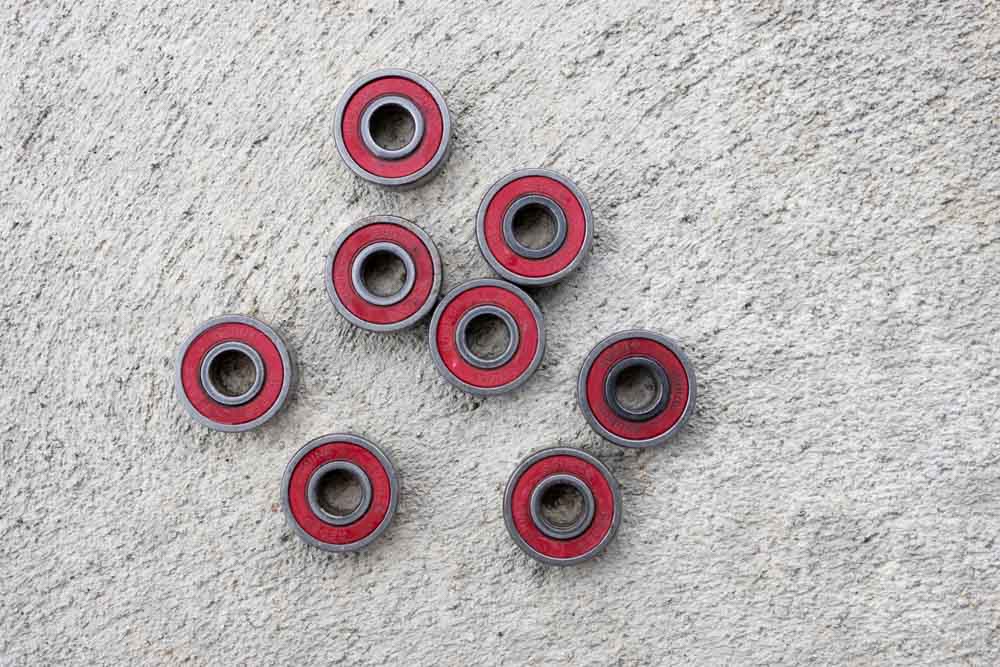
Skateboard bearings last 2+ years of regular use with the proper cleaning and lubrication throughout their lifespan. Once your bearings have rust on the inside of the races or squeak even after lubrication, it’s time to replace them. Skating in the wet will dramatically reduce their lifespan too.
Skateboard bearings take quite the beating over time, especially from dust, dirt, and potentially water. If left untouched, this debris increases the friction in your bearing, making it harder for them to rotate smoothly. Mix that with water after frequently skating in the rain, and the rust can seize and destroy your bearing entirely in extreme cases.
Even with proper care, your bearings can eventually wear down and have slightly uneven surfaces on the inner and outer races from rust. In addition, oxidized parts of the bearing can develop, even with a regular cleaning regiment, ultimately spelling the end of your bearings. Luckily that “end” is at least two years if you keep your bearings regularly lubricated and cleaned.
How To Make Your Skateboard Bearings Last Longer
The only way to make your bearings last longer is to keep them clean. Whether you’re at the skatepark or in the streets, dust and dirt pick up off the ground and work their way into your bearings. Once a bearing gets really dirty, you’ll start to hear it make noises as you skate. Sounds like hissing, buzzing, or even ticking are all common signs of a dirty bearing.
Luckily you can easily clean your bearings at home with the following items:
- Isopropyl Alcohol
- A Plastic Cup
- Bearing Lubricant
- A Thumbtack Or Blade
After removing your wheels from the skateboard, place the inner bearing race on the tip of your truck axle and pry back to lift out the bearing.
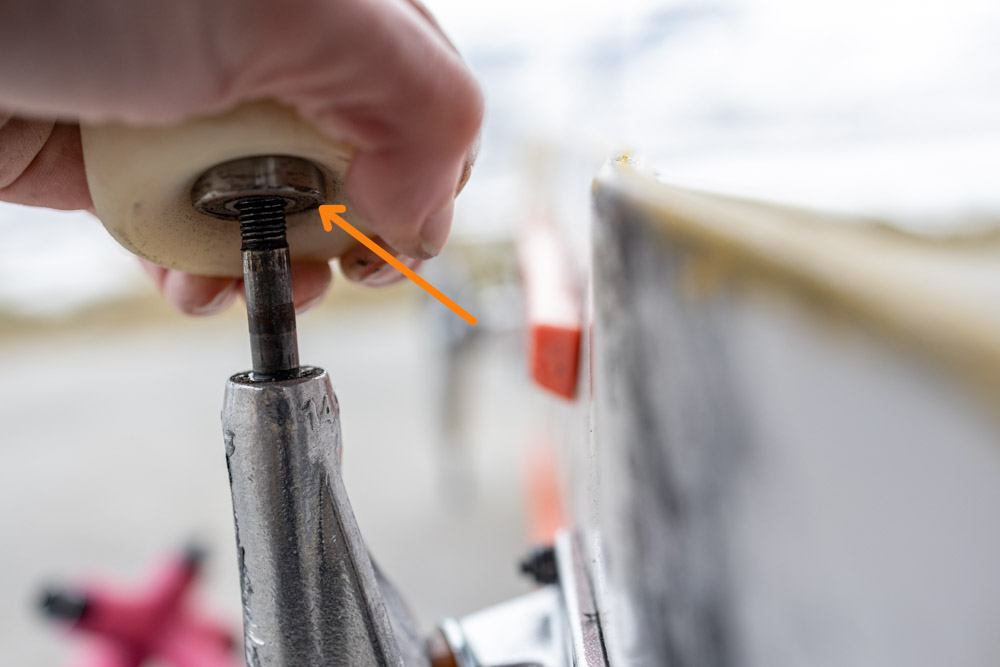
Once all of your bearings are removed from the wheel, take a thumbtack or blade and lift off the rubber shield of your bearing. If your bearings have a pressed metal shield, it won’t be possible to remove, so you can skip this step.
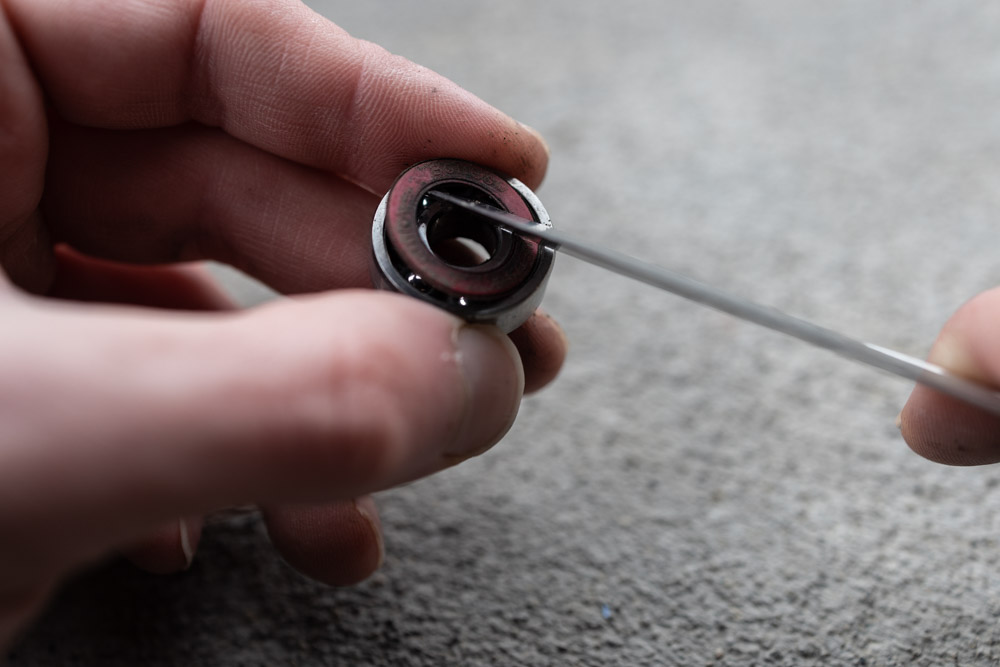
Now place your shieldless bearings into a container with enough isopropyl alcohol to submerge the bearings. Swish them around and leave them to sit for a few minutes before removing them.
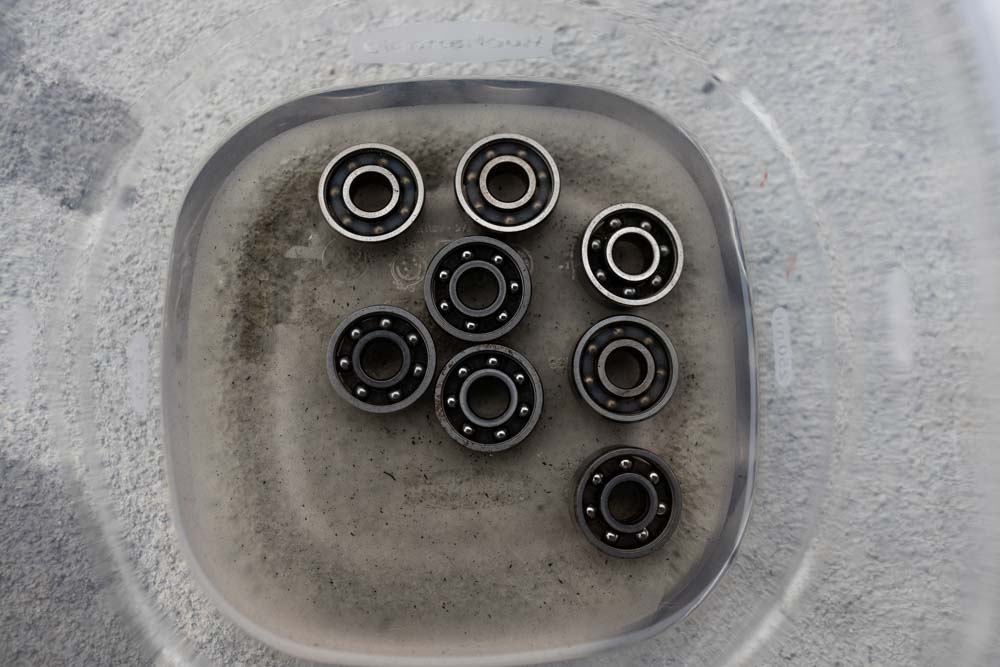
After they dry on a paper towel, take your bearing lubricant of choice (I suggest Bones Speed Cream or Bronson Bearing Lube) and add a few drops into each bearing. Give them a spin with your fingers to spread the lubricant, then press the shields back into place with your fingers.
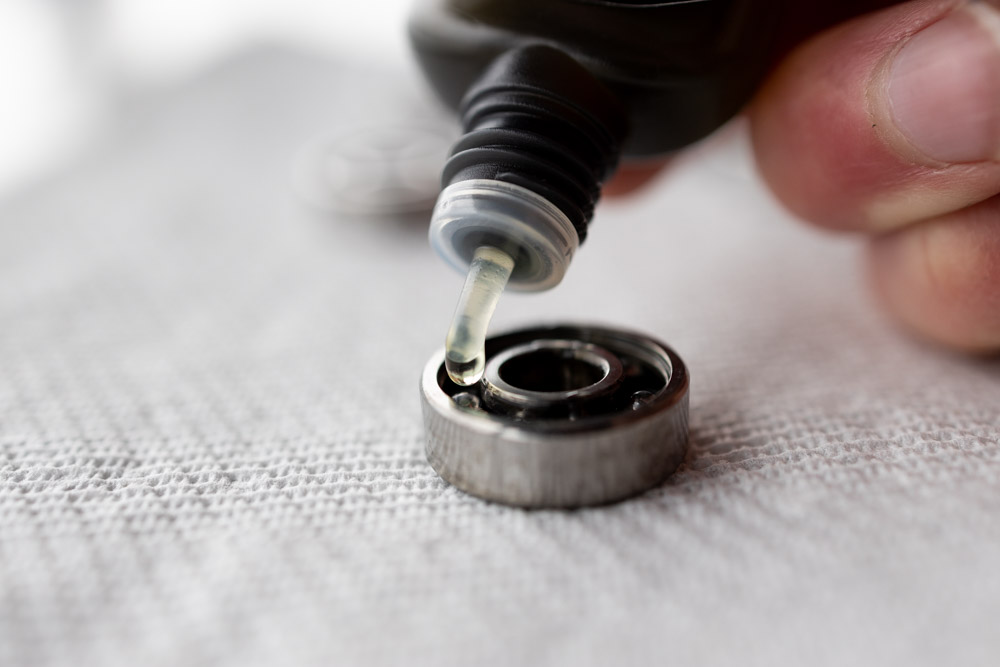
Lastly, put your bearings back into the wheels, attach them to your trucks again, and you’re ready to go!

I outline this entire process more in-depth in this other article about cleaning and maintaining skateboard bearings, but doing this every few months will make a big difference in the lifespan of your bearings!
So the reality is that your wheels will wear out a lot quicker than your bearings, but it will still take a significant amount of time. Especially if you flip your wheels around every few months to prevent coning, it can take well over a year to wear through a set of wheels.
I’ve skated wheels for years before without any problems, while I had to replace others only a few months after getting them due to unfixable flat spots. The wheel brand you go with plays a huge part in the durability of your wheels since higher-quality urethane tends to hold up the longest. I would suggest Bones or Spitfire wheels as the general standard, but I share all of the best skateboard wheel brands here.
As for bearings, keeping them lubricated is essential if you want them to last. Even if you get caught in the rain, just make sure to dry out your bearings, then relubricate them immediately afterward. Water washes away most of the lubricant in the bearing, so this is important if you don’t want to wreck your bearings. If you’re new to skateboard bearings and the mechanics of how they work and run smoothly, check out this bearing guide.
Happy Shredding!
– Brendan 🙂

